Blog
August 12, 2014
Life in Macro: the insects of Ruaha.
By Marius Swart, Clearly Africa guide
Creepy-crawlies, bugs, goggos or critters are all names, which conjure up feelings of fear and panic…a need to frantically swipe and slap at yourself whilst dancing on the spot! A reason to NOT go on safari in the rainy season.
As a kid I remember being influenced by the fear of other family members, convinced of impending death or grievous bodily harm every time an insect entered our space. It was not until I was a teenager that this irrational fear started waning due to the high survival rate of these encounters. A little bit of logic goes a long way…The abundance and diversity of arthropods in the natural world is beyond comprehension!
Mechanisms of physical adaptations regarding camouflage, defence and feeding is astounding and deserves to be marvelled at.
In Ruaha the rainy season usually commences from early December until early April. However from late November there are already signs of the approaching change, with the sudden increase in numbers of insects. A great majority of species provide a riot of colour and insanely intricate patterns in their design. Some cryptically painted to blend in and hide from potential predation and others boldly visible in very LOUD reds, blacks, whites and yellows! These vividly noticeable colours however serve a rather counterintuitive purpose.
Although strikingly apparent, these colours act as warning signs of the potent toxins present in the insect, which immediately divert attention from them. You only need to bite into an unripe fruit to quickly learn which colour means tasty and which not…
As for feeding mechanisms there are amongst others, biting or piercing mouthparts.Those that need to crush fruit-pulp or other insects have powerful mandibles which operate like scissors while those sucking sap from plants or the innards of other insects, they have a sharp straw-like proboscis to puncture and suck with.
Once you can control your anxiety about their perceived danger, there is always something amazing to observe with insects.
Turn your fear into marvel by gradually paying attention to the less “scary” species and notice their form and function, patterns and colours.
Ask your guide to point them out and you would be amazed at the wonderful addition insects make to the spectrum of experiences to be had whilst on safari!
Happy “bugging”…
Yours in awareness,
Marius Swart.
A large Citrus Swallow-tail butterfly visiting a blossoming Fire-ball Lily in October.
African Monarch butterfly being enticed to investigate the little-seen flowers of a Cyprus Sedge.
A strikingly coloured Long-horn beetle with bold aposematic black and yellow. These beetles tunnel through tree trunks and help recycle the nutrients.
A Fly perched on top of a fresh Preying Mantid egg-case possibly dabbing up some excess moisture.
Hovering at a Pretty Lady Cleome, this African Honey Bee searches for nectar.
Tiger Beetles are voracious predators of other insects and thus incredibly fast and agile!
This Damselfly perched on the banks of the Mwagusi River allowed me to leopard-crawl to very close quarters! They are incredible predatory aerobats like their cousins, dragonflies.
A large Bee Fly sitting on one of the many wildflowers so ubiquitous of the rainy season.
African Honey Bee collecting from the dangling inflorescence of Signal Grass. Note the drifting pollen particles in the breeze.
I can’t remember what this is…if you can find it, it was sucking sap from a very toxic Calotropis plant! White milky latex!
Elegant Grasshopper with its striking aposematic colouration.
Elegant Grasshopper with its striking aposematic colouration.
A young Emerald Long-horn Beetle.
An Acraea butterfly showing orange and black warning colours. They ingest toxins from a larval food-plant which is retained in their bodies post pupation!
A resting Dragonfly waiting for potential prey to pass within dashing distance.
Snouted Net-winged Beetles are quite large and visible.
Although not an insect per se, this Water Spider also astounds with its design and behaviour!
The hatchling of a Preying Mantid braving the world.
One of the early instars of a Weevil Beetle. The spiny protrusions are there to aid in self-defence!
African Monarch butterfly visiting the crisp blossom cluster of a Heliotrope or String-of-stars.

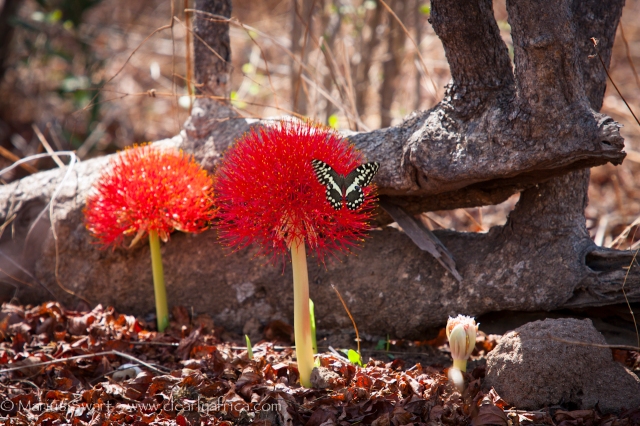
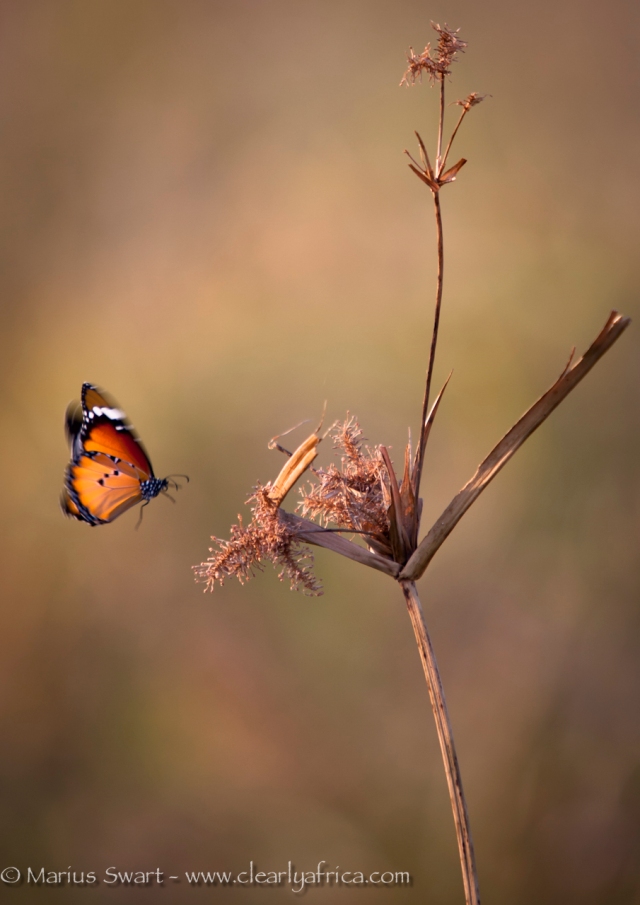
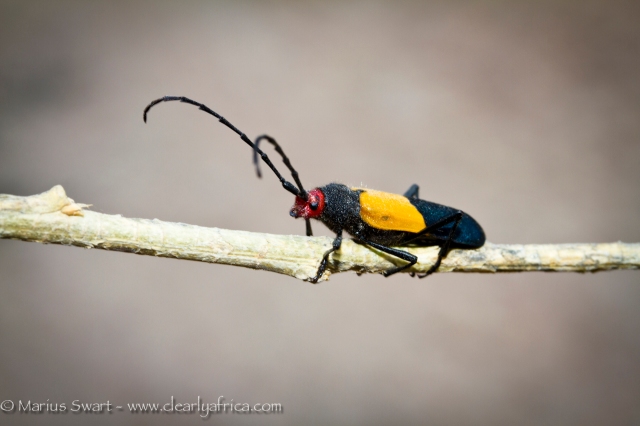
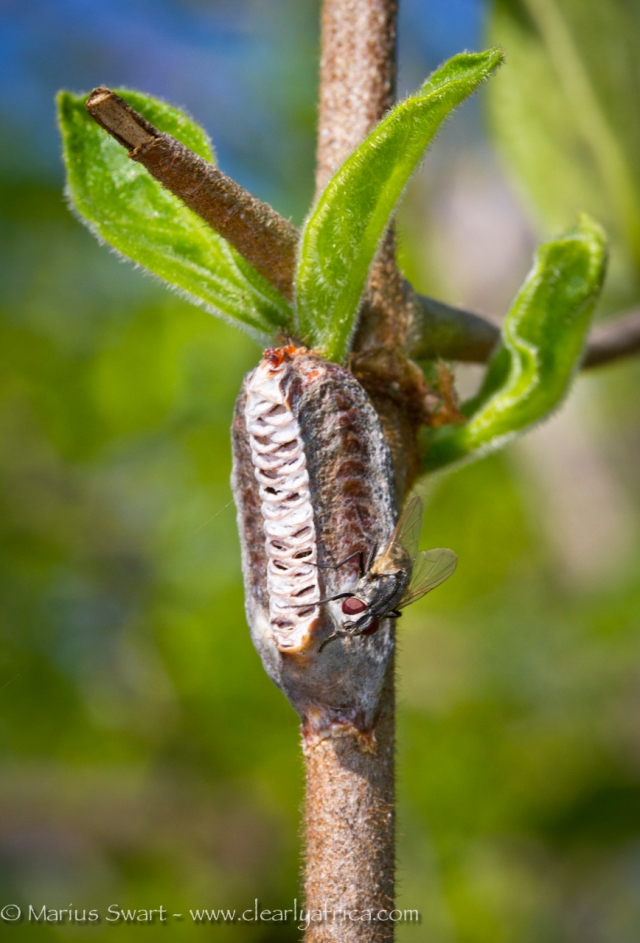
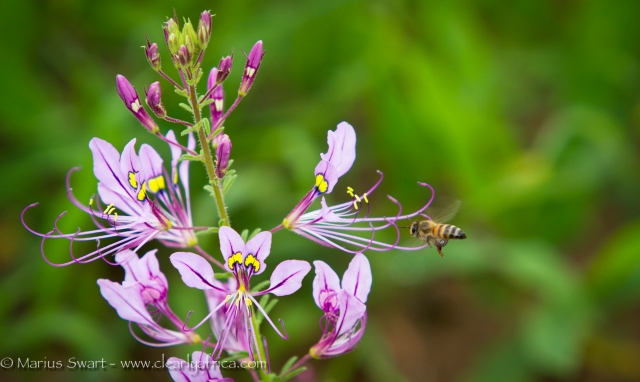
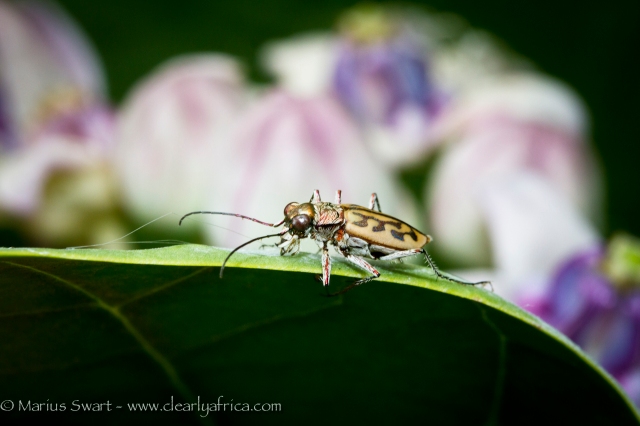
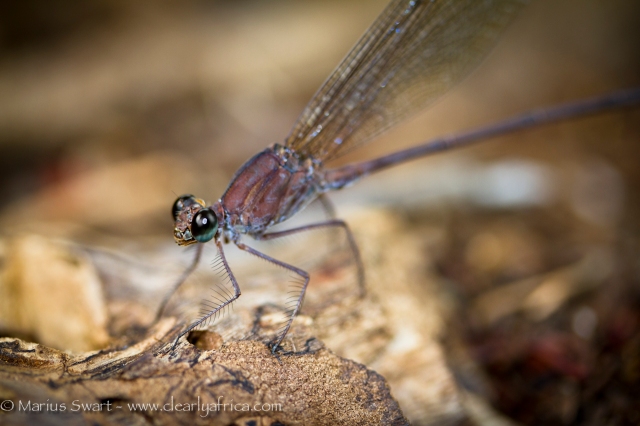
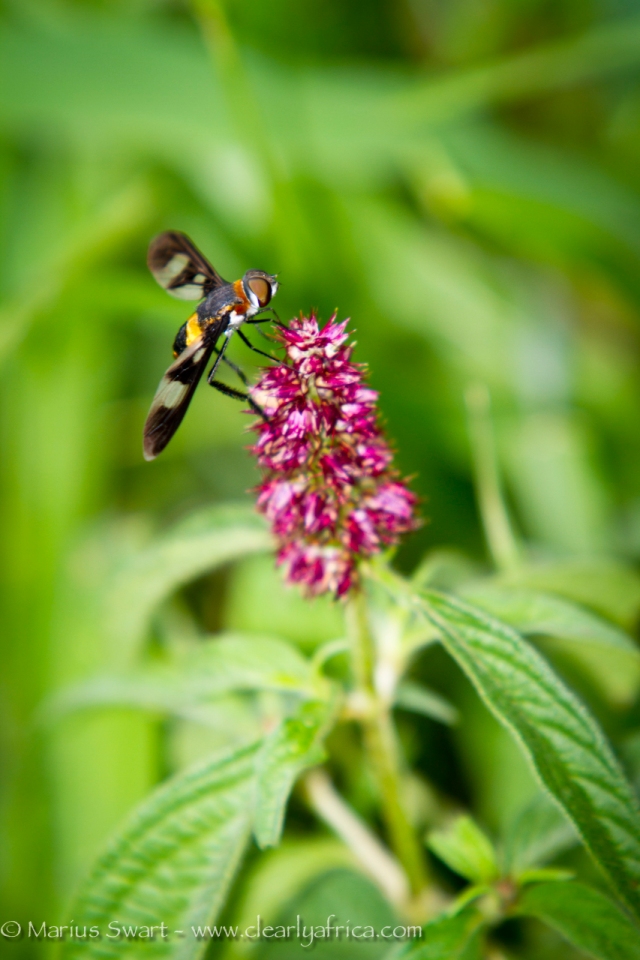
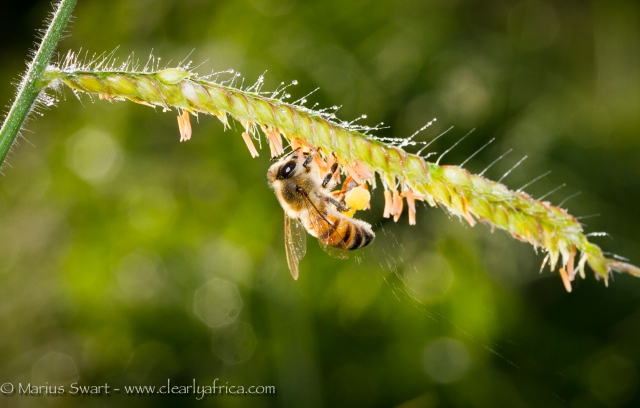
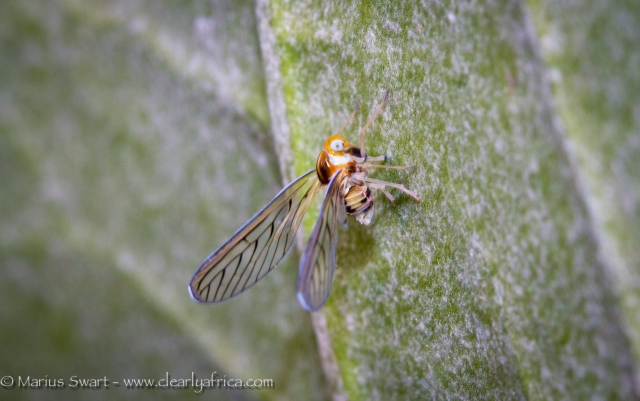
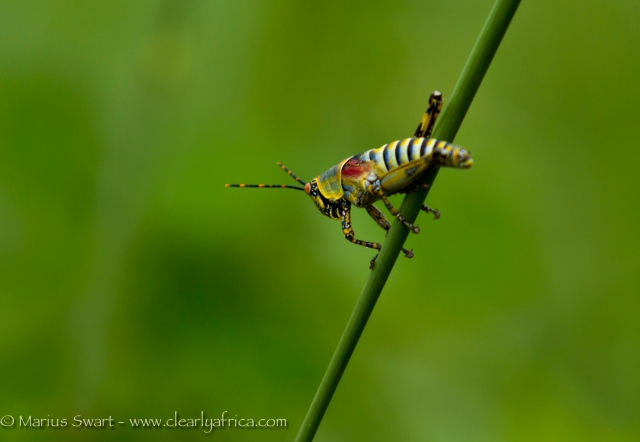
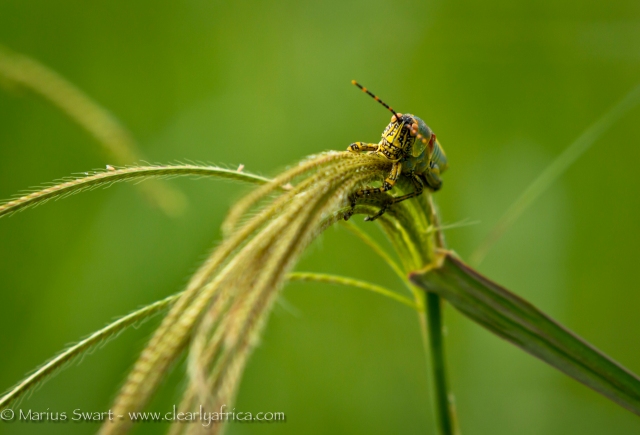
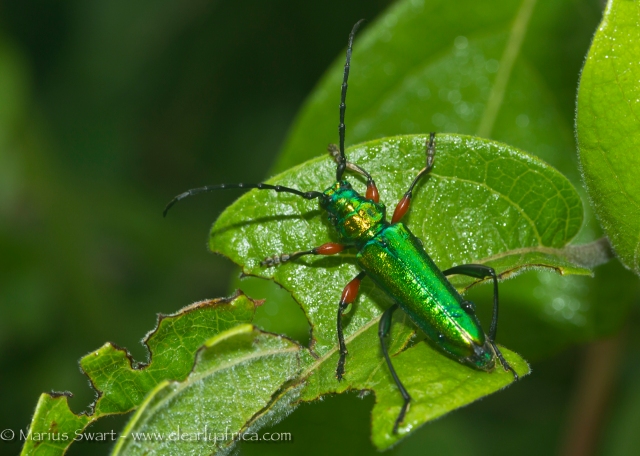
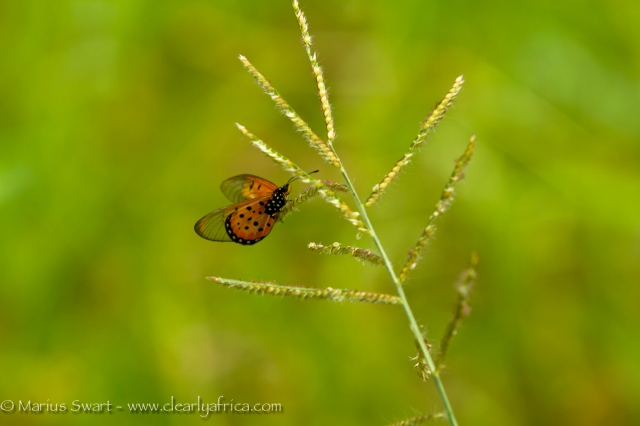
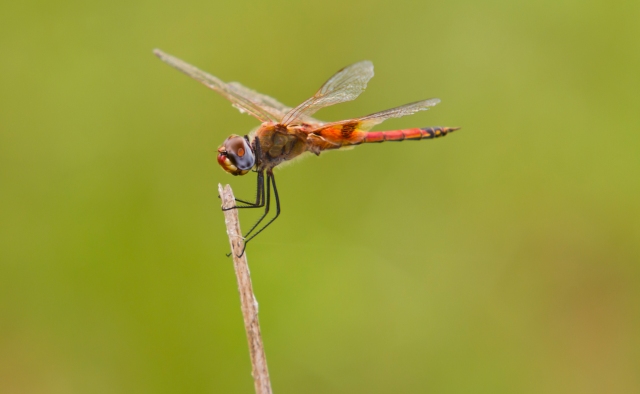
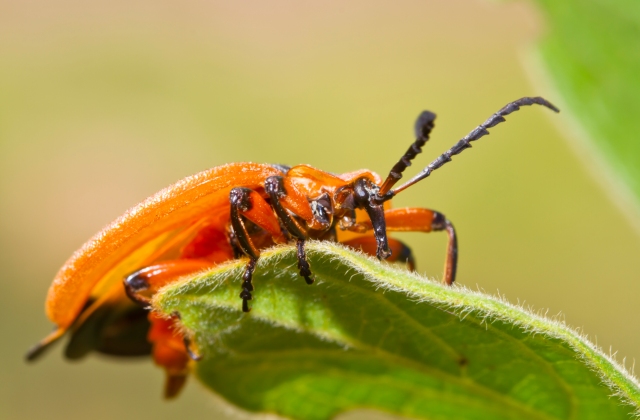
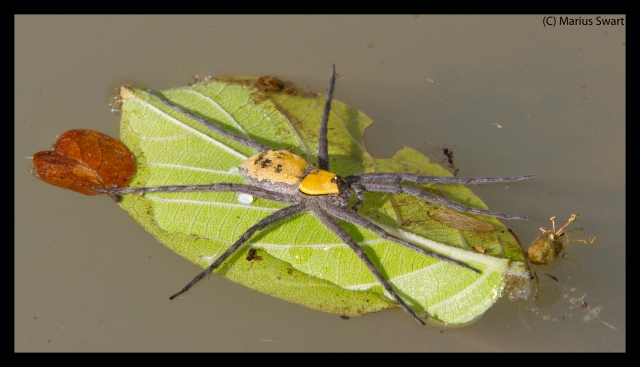
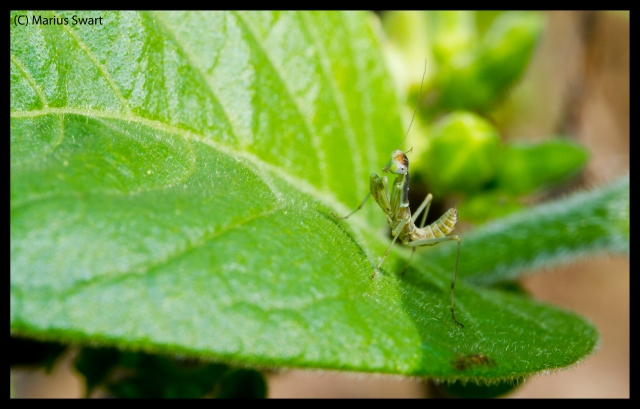

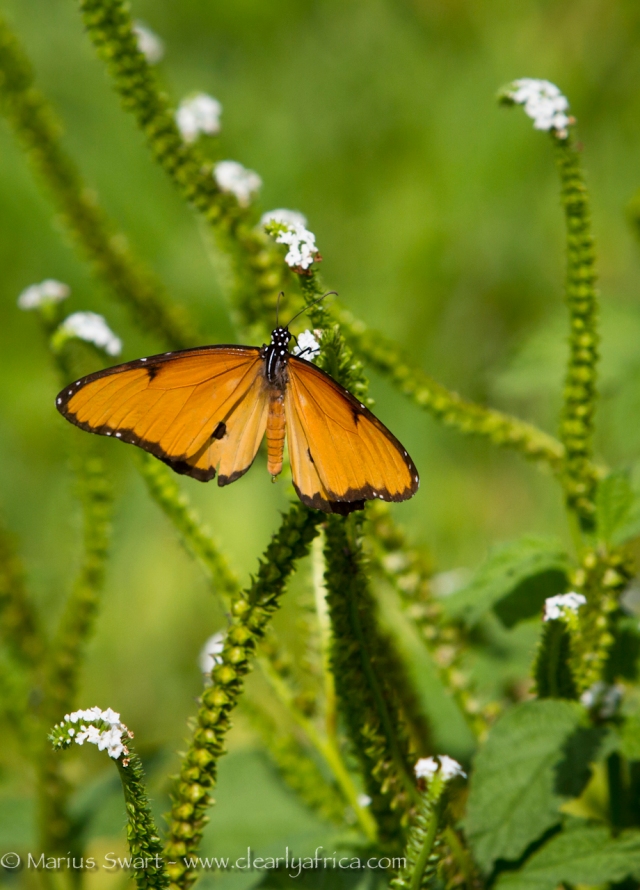




































Add comment
By Marius Swart, Clearly Africa guide
Creepy-crawlies, bugs, goggos or critters are all names, which conjure up feelings of fear and panic…a need to frantically swipe and slap at yourself whilst dancing on the spot! A reason to NOT go on safari in the rainy season.
As a kid I remember being influenced by the fear of other family members, convinced of impending death or grievous bodily harm every time an insect entered our space. It was not until I was a teenager that this irrational fear started waning due to the high survival rate of these encounters. A little bit of logic goes a long way…The abundance and diversity of arthropods in the natural world is beyond comprehension!
Mechanisms of physical adaptations regarding camouflage, defence and feeding is astounding and deserves to be marvelled at.
In Ruaha the rainy season usually commences from early December until early April. However from late November there are already signs of the approaching change, with the sudden increase in numbers of insects. A great majority of species provide a riot of colour and insanely intricate patterns in their design. Some cryptically painted to blend in and hide from potential predation and others boldly visible in very LOUD reds, blacks, whites and yellows! These vividly noticeable colours however serve a rather counterintuitive purpose.
Although strikingly apparent, these colours act as warning signs of the potent toxins present in the insect, which immediately divert attention from them. You only need to bite into an unripe fruit to quickly learn which colour means tasty and which not…
As for feeding mechanisms there are amongst others, biting or piercing mouthparts.Those that need to crush fruit-pulp or other insects have powerful mandibles which operate like scissors while those sucking sap from plants or the innards of other insects, they have a sharp straw-like proboscis to puncture and suck with.
Once you can control your anxiety about their perceived danger, there is always something amazing to observe with insects.
Turn your fear into marvel by gradually paying attention to the less “scary” species and notice their form and function, patterns and colours.
Ask your guide to point them out and you would be amazed at the wonderful addition insects make to the spectrum of experiences to be had whilst on safari!
Happy “bugging”…
Yours in awareness,
Marius Swart.
A large Citrus Swallow-tail butterfly visiting a blossoming Fire-ball Lily in October.
African Monarch butterfly being enticed to investigate the little-seen flowers of a Cyprus Sedge.
A strikingly coloured Long-horn beetle with bold aposematic black and yellow. These beetles tunnel through tree trunks and help recycle the nutrients.
A Fly perched on top of a fresh Preying Mantid egg-case possibly dabbing up some excess moisture.
Hovering at a Pretty Lady Cleome, this African Honey Bee searches for nectar.
Tiger Beetles are voracious predators of other insects and thus incredibly fast and agile!
This Damselfly perched on the banks of the Mwagusi River allowed me to leopard-crawl to very close quarters! They are incredible predatory aerobats like their cousins, dragonflies.
A large Bee Fly sitting on one of the many wildflowers so ubiquitous of the rainy season.
African Honey Bee collecting from the dangling inflorescence of Signal Grass. Note the drifting pollen particles in the breeze.
I can’t remember what this is…if you can find it, it was sucking sap from a very toxic Calotropis plant! White milky latex!
Elegant Grasshopper with its striking aposematic colouration.
Elegant Grasshopper with its striking aposematic colouration.
A young Emerald Long-horn Beetle.
An Acraea butterfly showing orange and black warning colours. They ingest toxins from a larval food-plant which is retained in their bodies post pupation!
A resting Dragonfly waiting for potential prey to pass within dashing distance.
Snouted Net-winged Beetles are quite large and visible.
Although not an insect per se, this Water Spider also astounds with its design and behaviour!
The hatchling of a Preying Mantid braving the world.
One of the early instars of a Weevil Beetle. The spiny protrusions are there to aid in self-defence!
African Monarch butterfly visiting the crisp blossom cluster of a Heliotrope or String-of-stars.